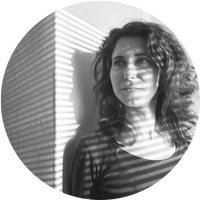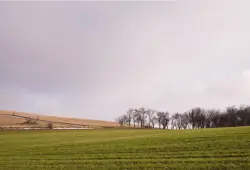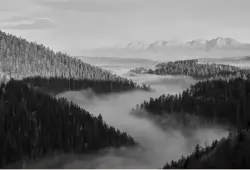Lujza Marečková

|
Lujza is a Slovak photographer and visual artist whose work explores the relationship between nature, found objects, and experimental techniques. She holds a Master’s degree from the Institute of Creative Photography in Opava and a Bachelor’s from Canterbury Christ Church University. Her studies also took her to FAMU in Prague through the Erasmus program, where she immersed herself in a vibrant artistic community and gained experience in the film industry as a film still photographer and camera assistant.
Her artistic practice is driven by a deep connection to the environment, using photography, painting, and ceramics to highlight themes of fragility and transformation. Embracing chance as part of her process, she incorporates fire, natural elements, and unconventional materials to create evocative, textural works. Through her art, Lujza invites viewers to reflect on ecological consciousness and the delicate balance between humanity and nature.
|
|---|
Slovak Visual Artist Merging Photography, Nature, and Experimental Techniques
It all began with a single gift from my father—a simple, one-use camera loaded with analogue film. Though it was designed to be used just once, it ignited a spark of curiosity within me.
Growing up, I was always the one to look closer, to observe the small details that others often overlooked. The way light filtered through leaves, the laughter of friends frozen in a fleeting moment, or the stillness of a sunset painted across the horizon; I felt an innate urge to capture it all. With my trusty one-use camera, I began to document my explorations. I quickly became enthralled by the entire process of capturing reality.
As I honed my skills, I decided to challenge myself further by entering a few photography competitions. To my surprise, I began receiving accolades for my work. Each prize was a validation of my passion, encouraging me to continue my journey. After high school, I knew I wanted to immerse myself even more in the world of photography, so I enrolled at an art university to study the subject in-depth.
This was a turning point in my life. Surrounded by fellow artists and mentors who shared my passion, I learned not just the technical aspects of photography, but also the philosophy behind art itself. My heart swelled as I explored various mediums, but photography remained my first love. In the midst of my photographic pursuits, I began to experiment with painting during my free time, finding joy in the splash of color and form on canvas.
Now, as I navigate this vibrant world of art, I aspire to blend my love for fine art and photography into unique projects. Each day, I seek to educate myself, exploring new techniques, and challenging myself to think outside the frame. Photography opened the door to my creativity; painting added depth to my expression.
Exhibitions of Artworks
- Solo Exhibition , Kopanice and Busstops | DAV Senica (SR) 2024
- Festival VNS | Považská Bystrica (SR) | 2023
- Spirit Open | Filharmonia Szczecin (PL) | 2023
- Participation of European Project Reuse | Prague (CZ) 2023
- Elementary School Vrbovce | Vrbovce (SR) 2022
|
Are you interested in a commission artwork made by Lujza just for you?
|
|---|
Lujza Marečková is present in these categories:
Need more help?
|
Certificate of Authenticity |
14 days money back return policy |
Safe checkout guaranteed |
|---|









